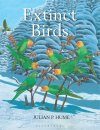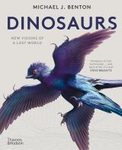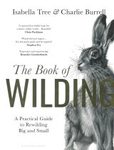![Extinct Birds Extinct Birds]()
Click to have a closer look
About this book
Biography
Related titles
About this book
Extinct Birds was the first comprehensive review of the hundreds of the bird species and subspecies that have become extinct over the last 1,000 years of habitat degradation, over-hunting and rat introduction. It has become the standard text on this subject, covering both familiar icons of extinction as well as more obscure birds, some known from just one specimen or from travellers' tales. This second edition is expanded to include dozens of new species, as more are constantly added to the list, either through extinction or through new subfossil discoveries.
Extinct Birds is the result of decades of research into literature and museum drawers, as well as caves and subfossil deposits, which often reveal birds long-gone that disappeared without ever being recorded by scientists while they lived. From Greak Auks, Carolina Parakeets and Dodos to the amazing yet almost completely vanished bird radiations of Hawaii and New Zealand via rafts of extinction in the Pacific and elsewhere, Extinct Birds is both a sumptuous reference and astounding testament to humanity's devastating impact on wildlife.
Customer Reviews
Biography
After becoming established as a self taught artist specialising in reconstructing extinct species, Julian P. Hume undertook a PhD at the Natural History Museum, London. Julian now works as an author and artist at the Natural History Museum in Tring and has a long record of describing species new to science. An expert on the extinct birds of the Indian Ocean, he has dug for Dodos on Mauritius, searched for flightless pigeons on the Comoros, and undertaken many other research expeditions around the world. His previous books include Lost Land of the Dodo (Poyser, 2008) and Extinct Birds (Poyser, 2011).
Monograph
Out of Print
By: Julian P Hume(Author), Errol Fuller(Foreword By)
608 pages, 80 b/w illustrations
"it is just five years since I reviewed the first edition of this book [...] I decided it was 'a superb work of ornithological scholarship which will surely become the standard point of first reference for years to come.' This new edition undoubtedly merits exactly the same judgement. It is 160 pages longer than its predecessor, with another half-dozen pages of references added to the original 69, representing five more years' worth of painstaking investigation and a lot of updating. [...] A price increase of £10.00 may seem a bit steep, but my guess is that it is worth it. I wonder what the next five years will bring..."
– Mike Everett, British Birds, Volume 111, January 2018
Review of the first edition:
"[...] I hope that this very fine book will not only stand as a major work of reference, but also serve to remind us that a great deal remains to be done, not least in filling the many gaps in our present knowledge."
– Mike Everett, http://www.britishbirds.co.uk
















































